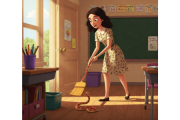This is a series of stories under the title “My Storied Childhood“. It is recommended to read them in order, starting with the Prelude, and then Part I.
The city of Maracaibo is named for Mara, the cacique or chief of the indigenous Coquivacoa people who died fighting the Spanish conquistadores in the 16th century. Today it is the second-largest city in Venezuela. Founded by Captain Pedro Maldonado in 1574, its coastal site was long vulnerable to attack due to its exposed location on the strait connecting Lake Maracaibo to the Gulf of Venezuela on what was then the Spanish Main of the Caribbean. This was the route Spanish treasure ships took bearing loot from what are now Mexico, Bolivia, Peru, and Colombia back to swell the Spanish treasury across the Atlantic. The name ‘Venezuela’ was given the country by Spanish explorers intrigued by coastal native houses built on stilts above the sea which reminded them of Venice– ‘Venezia’ in Spanish– with its diminutive ‘-uela’ translated as ‘Little Venice.’ The city of Maracaibo was sacked or plundered by rival European forces in 1614, 1667, and most famously, in 1668, by the notorious English pirate Henry Morgan, later knighted and appointed Governor of Jamaica. For several months in 1958, when I was eight years old, Maracaibo was my family’s home, the result of a transfer by my father’s employer, Shell Oil. The ample oil wealth beneath the waters of this largest of South American lakes is not what pirates in bygone centuries were looking for, but as photos of oil derricks on its waters attest, it was so for twentieth-century commerce.
Maracaibo is very hot and humid, routinely and torpidly in excess of 90 degrees day and night, and lacks the compensation of breezes to dissipate the heat due to high ground that blocks trade winds. We did some of our grocery shopping at a gigantic warehouse outside the city called the ‘comisario,’ where goods were sold exclusively to Shell employees at discounted prices, like an early Costco store, except that they sold only food and household items rather than canoes and cameras. The house we were assigned on Calle Colombia in ‘El Paraiso,’ was one of a series of bungalows complemented by a sandy parched lawn, scrubby backyard, and thin tall trees. All lacked central air conditioning, and one of the first improvements my parents made was to buy a ceiling-mounted fan for the living room, and room-sized air conditioners for two of its three bedrooms, so that we could at least sleep comfortably, lulled to sleep by their monotonously loud operational clatter. On one somnolent afternoon in the rainy season, while my parents and brothers slumbered during the long, almost essential daily siesta, and, cabined by the rain, bored of the silence and of reading the comics that classmates at school traded with one another with an almost fanatical zeal, I picked up a rubber ball, and decided to see what would happen if I threw it into the fan. I soon found out. A blade caught it and hurled it with diabolical force straight at my mother’s silver tea service on the sideboard. The noise was deafening: the teapot, creamer and milk jug recoiled as if shot, the sugar bowl fell to the floor, and in panic I tried to think of a mitigating cause for the damage when my dad would appear in fury, knowing in my sinking heart that there was none. But there was no movement from the bedrooms. All was as it had been before the cannonade. I could not believe my luck. The noisy air conditioning muffled the din. I went to retrieve the wounded vessels, and, to my surprise, there was neither scratch nor dent on any of them. I blessed the silversmiths who made them.




